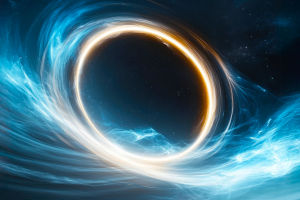Can humanity ever unlock the secret to creating a machine that runs indefinitely without an external energy source? The concept of a perpetual motion machine has fascinated thinkers for centuries.
While it remains a subject of debate, the laws of physics make its realization highly improbable.
However, it still sparks curiosity and creativity, and in this article, we'll explore the concept, its theoretical foundations, and why perpetual motion remains an impossibility—at least with our current understanding of science.
What is Perpetual Motion?
At its core, the idea of perpetual motion refers to a machine or system that continues to operate indefinitely without needing any additional energy input. For such a machine to work, it would need to overcome the fundamental laws of thermodynamics, which govern energy, work, and heat in the universe.
The idea is simple: imagine a machine that could run forever without fuel, replacing the need for batteries, fuel, or any other energy sources. It would be a revolutionary concept, reducing the need for power generation, possibly transforming the world as we know it. But why has this dream remained out of reach?
The Laws of Thermodynamics
In order to understand why a perpetual motion machine is impossible, we must first dive into the laws of thermodynamics, which form the backbone of all modern physics. These laws govern how energy behaves in the universe.
1. The First Law of Thermodynamics states that energy cannot be created or destroyed, only transformed. This means that to make a machine run, energy has to come from somewhere. The idea of perpetual motion would violate this law because it suggests that a machine could operate without any external energy source.
2. The Second Law of Thermodynamics introduces the concept of entropy. It asserts that systems tend to move toward disorder and that energy will naturally flow from areas of high energy to low energy. In simpler terms, energy dissipates over time. A perpetual motion machine would defy this principle because it would have to operate in a way that avoids the inevitable loss of energy, which happens in all real-world processes.
These laws make the concept of a perpetual motion machine fundamentally flawed. But is there a way to get closer to this seemingly impossible idea?
Types of Perpetual Motion Machines
Over the years, inventors have proposed several designs for perpetual motion machines. These concepts often fall into one of three categories:
1. First Kind: A machine that violates the First Law of Thermodynamics by creating energy from nothing. These machines are supposed to operate without any input of energy, generating energy that can then be used elsewhere. These machines are impossible because they would require the creation of energy out of nothing, which contradicts the First Law.
2. Second Kind: Machines that supposedly violate the Second Law by operating in a manner that does not increase entropy. These machines are designed to extract heat from a cold environment and convert it into work without any losses. While this idea seems appealing, it would also violate the Second Law, as all real-world processes involve energy losses, especially in the form of heat dissipation.
3. Third Kind: These machines are designed to continue motion indefinitely without any apparent energy loss. While they do not create energy from nothing, they are still subject to the same laws, meaning they will eventually slow down due to friction, air resistance, and other factors.
Why Perpetual Motion Is Impractical
The dream of perpetual motion is rooted in human ingenuity and the desire for limitless energy, but there are significant practical and scientific challenges. For instance, even the best-designed systems will eventually encounter friction, air resistance, or other forms of energy loss. These losses are inevitable and cause any mechanical system to gradually lose energy.
For example, even in an almost frictionless environment, such as in space, energy loss occurs due to the interaction of atoms and particles. Perpetual motion machines are also constrained by mechanical limitations—materials break down, and over time, systems wear out.
Moreover, modern advancements in energy efficiency, such as in solar panels and wind turbines, show that while we cannot achieve perpetual motion, we can work on improving energy sustainability. This focus on improving existing energy sources is far more feasible and scientifically grounded.
The Role of Innovation in Energy Solutions
Although a true perpetual motion machine remains beyond our reach, the desire to create an everlasting energy source has spurred innovation. From the development of renewable energy sources to breakthroughs in energy storage, technology continues to advance.
For example, solar energy and wind power harness natural forces that are essentially "free" and abundant. These sources are not perpetual, but their sustainability could significantly reduce humanity's dependence on fossil fuels. Energy-efficient designs and smarter technologies aim to extend the life of machines and reduce energy waste. These innovations might not create perpetual motion, but they push the boundaries of energy efficiency.
Conclusion: The Dream Lives On
In conclusion, while the idea of a perpetual motion machine is, by all accounts, scientifically impossible, the pursuit of such concepts has contributed significantly to the advancement of science and technology. The fundamental laws of physics stand in the way of creating a machine that runs forever without external energy input, but humanity's quest for innovation continues to inspire groundbreaking advancements in the world of energy.
While we may never unlock the secret of perpetual motion, the dream itself continues to drive the search for cleaner, more efficient, and sustainable energy solutions. As we look toward the future, it's clear that there is still much to be discovered—and perhaps, in ways we cannot yet imagine, we will find new ways to harness and conserve energy more effectively.
Does this mean we should give up on the dream? Perhaps not. After all, in science, even the impossible can sometimes lead to unexpected discoveries.


